If you have ever stayed in a cheap hotel on a Greek island, you may remember seeing a few shelves full of mainly novels in the lobby or near the entrance to the hotel. I
once stayed in a hotel where there were a set of bookshelves on every floor of the hotel (yes, I did make sure to visit every floor during my stay). Cheap hotels hold some of the best English language libraries in Greece.You will also find a good number of novels written in German, Dutch, Swedish and possibly Danish. You won't find many French books though; this shows where most of our European tourists come from. The tourists bring these books over as reading material for when they are sitting under an umbrella on the beach. At the end of their stay, they leave the books behind in the room they stayed; they obviously don't feel the need to carry them back home, where books are cheap, they buy them regularly, they pass them round to others who also read regularly, they take them to second-hand bookshops, they talk about them in reading clubs, etc, etc, etc. It's quite the opposite situation in Crete, so I'm very thankful for those tourists who leave their books behind, which gives me a chance to get my hands on cheap reading material.
On our most recent summer mini-break in
Paleohora, we stayed in
one of these hotels. I got may hands on
The Lollipop Shoes
(by Joanne Harris), which is the sequel to
Chocolat
, which most of you reading this blog will know from the highly successful film
by the same name
. This time, we find Vianne (the heroine of
Chocolat
) with a new identity and a new
chocolaterie, living in Paris close to Sacré Cœur, which is what initially endeared me to the book, as this is where we recently spent a most
enjoyable family holiday, staying near the metro station close to this spot in Montmatre. The story deals with the power of chocolate once again, mixed with spells and cantrips in the occult world, with a similar group of interesting characters as those in Harris'
earlier novel. I found the 600 pages of
The Lollipop Shoes more gripping than the 300 pages of
Chocolat, and couldn't put it down; it was the perfect way to spend my time under a wide straw beach umbrella on Grammenos Beach.
Chocolate is part of global cuisine. Nearly everyone knows it and eats it. The book was filled with tempting descriptions of chocolates of all kinds: fudge squares, coconut truffles, rum truffles, peach brandy truffles, mendiants du roi, hazelnut rolls, chocolate cake, lavender brittle, hot chilli squares, white chocolate angels, chocolate mice, coconut macaroons, violet creams, all calling out to the reader:
try me, taste me, test me.
Working with chocolate is not like cooking a family meal. Different forms of chocolate have different temperature and handling needs. The result of a chocolate project is often a work of art. I had a little bit of leftover 70% bio-chocolate from when I made
Elizabeth Bard's
molten chocolate cakes, which I decided to use in combination with the peel of some organic oranges from our own orange orchards. The basic recipe for the sugared orange peel is from
Kiki's blog, which appears in Greek. I have adapted it to make one of the chocolates described in
The Lollipop Shoes
: chocolate-coated candied oranges.
At this time in the season, the oranges in our fields are in a bad state; Greece is too far away from Northern Europe for her high quality products to warrant attention, while she is too close to Turkey, a major producer of citrus, to compete with them for their market share.
You need:
4-5 pesticide-free oranges with a thick peel (remember, you are eating the peel!)
2 1/2 teacups of sugar for the syrup
1 1/2 cup of water for the syrup
1 more cup of sugar for rolling the peel in
100-200g of 70% chocolate (
depending on whether you want to coat each individual strip of orange peel completely or only partially, so that some of the orange is still exposed)
Cut the oranges into into 6-8 segments and remove the fruit and pith. Only the peel will be used; the oranges can be juiced beforehand, or they can be eaten fresh as is or used in a salad. (Kiki says that the peels can be placed in a plastic bag and kept in the refrigerator; you can add to your peel stocks as you eat the oranges.) Cut the peel into lengthwise slices 0.5-1.0cm long.
Fill a pot with tap water and boil the orange peel 5 minutes in a pot of water just covering the slices. Then drain all the water from the pot and repeat this process twice. (This is to make the peel taste less bitter.) Once the peel has been boiled three times, lay the strips onto a piece of kitchen paper and let them dry as much as possible: the drier, the better.
Make the syrup by boiling the 2 1/2 cups of sugar with the 1 1/2 cup of water. Let the syrup boil for 5-10 minutes, and then add the orange peel. Lower the heat (this is important so as not to burn the pot!) and let the strips boil away in it until they have soaked up all the syrup. Stir with a fork, taking care not to break the peel. This will take nearly an hour.
Allow the peel to cool down. Lay a piece of greaseproof paper onto a baking tray. Tip 1 cup of sugar into a bowl. Coat the peel strips, one by one, in sugar. Lay them on the lined baking tray, well spread out to allow them to dry quickly. This will take at least 3 hours. Don't be tempted to eat them yet - you haven't coated them in chocolate!
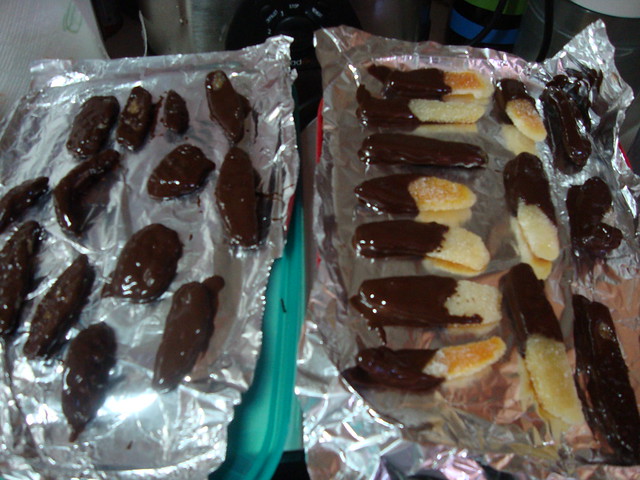
When the strips are quite dry, shake them so that as much excess sugar falls off them. (This sugar can be re-used in any way you would normally use sugar.) Melt the chocolate in a double boiler. Line a baking tray with aluminium foil. Dip the orange strips in the chocolate with a fork - don't be tempted to dip them in with your fingers, because you'll get covered in chocolate and then you'll have to lick it off, won't you? - then lift them out of the chocolate and wait until the excess chocolate stops running, then place each one on the foil to set. If you don't want to cover them completely, pick up each strip with your fingers and dip it into the chocolate until half way. Then finish the process in the same way as described previously. Allow the dipped peel strips to set; they are best stored in the fridge.
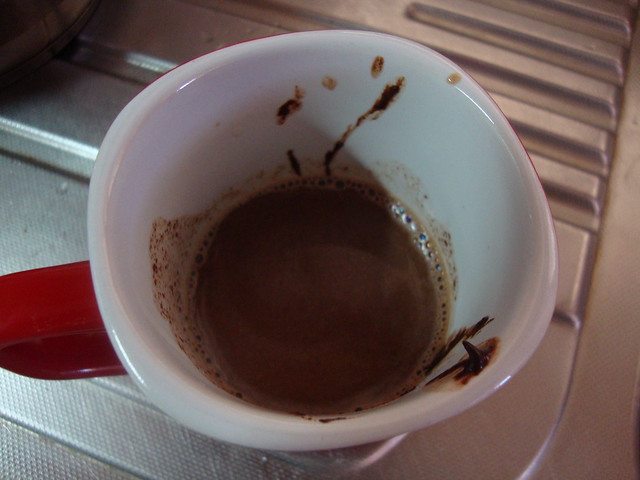
Oh, and don't wash out your double boiler just yet! Add 1/4 cup water and 1/4 cup milk to the bowl and reheat, allowing the chocolate to melt in the liquids. Pour the drink into a cup and sprinkle some pepper or hot chilli flakes over it (and maybe a dash of your favorite liqueur). Now you have your hot toddy, all in one.
These delicious treats aren't very sweet at all, but they do contain a lot of sugar, so it's best to make them for sharing among many people, so that you don't feel the temptation to eat too many on your own. They are also rather fiddly and time-consuming to make, so it's best to make them to be served as a special treat. They also look spectacular in pretty transparent jars, to be given as a present to good friends.
A small update:
The second batch I made of these was rather different: this time, I used the whole orange cut up in slices, with some flesh remaining on the peel (I wasn't fussed about the juice that drained away - you can do this over a bowl and drink the juice) and followed the same boiling procedure as the recipe states. Then I cooked the slices in the syrup, again as the recipe states, but I didn't coat them in sugar (I wanted to purposely avoid this step, to avoid a gritty look to the final product).
I let them dry in the air for a couple of days, but they never actually got very dry. This is the effect I wanted: a soft juicy-looking fruit. Most of the flesh had melted away, but the peel was still firm enough to handle. I then coated each piece in the chocolate and let them set in the fridge. I found that these (unlike the first batch) were best stored in the freezer (not the fridge) and I took out the amount that I needed as I served them. They never really froze rock solid either, so they were either very chewy when eaten straight out of the freezer, or very soft if left to thaw. Either way, they were delicious!
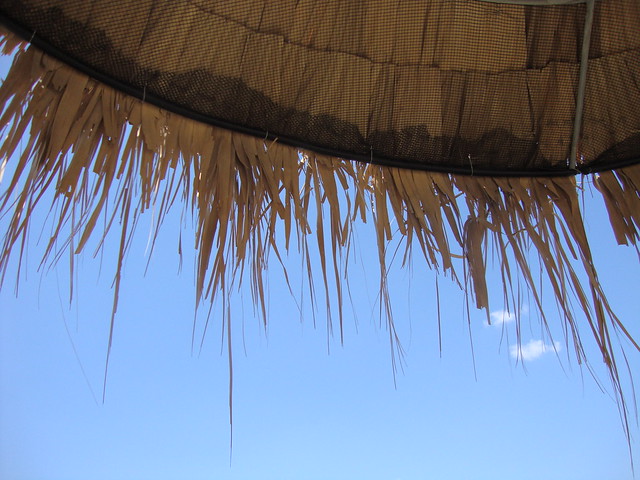
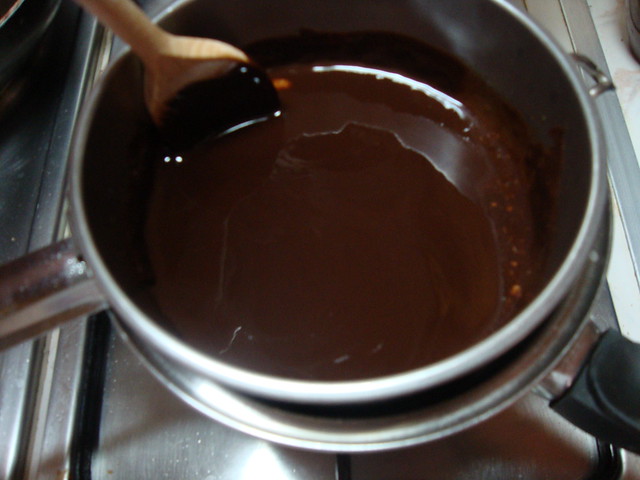
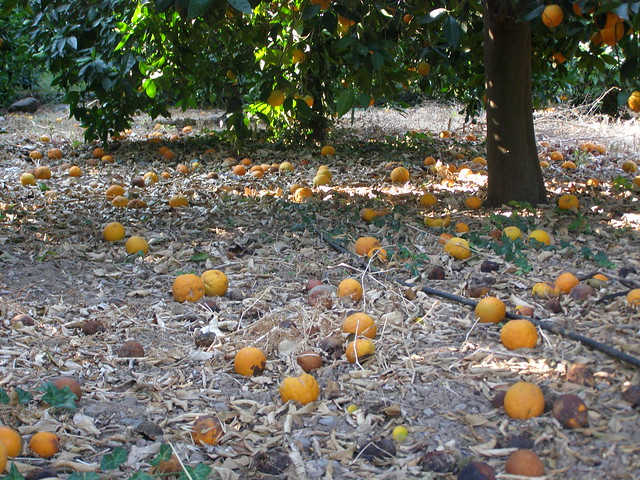
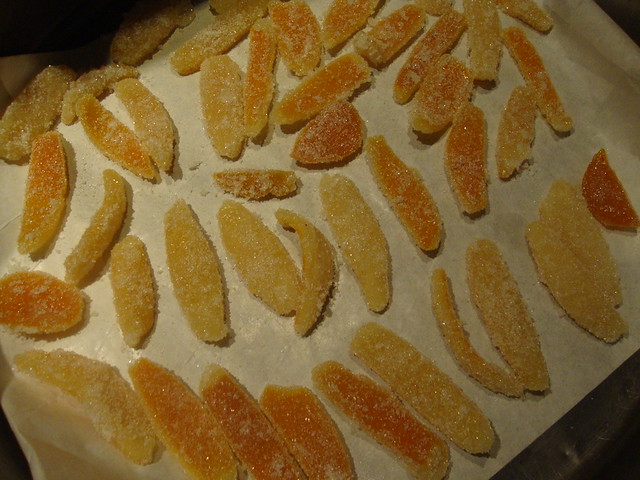


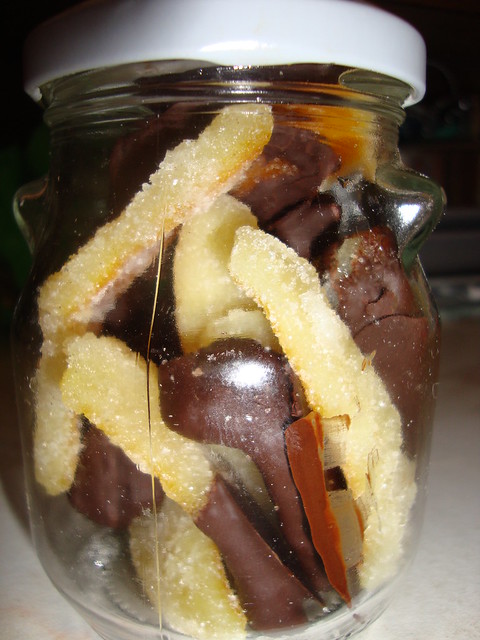
Αχ....Δεν μπορείς να φανταστείς ΠΟΣΟ μου αρέσουν! Δεν μπορείς. Το μόνο που δεν έχω κάνει ακόμα, είναι να τις βουτήξω σε σοκολάτα. Αν κάνω ΚΑΙ αυτό, δεν θα μείνει ούτε μία για την επόμενη μέρα!!!!
ReplyDeleteI love your gorgeous umbrella against the sky photo. And thanks for letting me know about this sequel to Chocolat. I love Harris' books.
ReplyDeleteThank you so much for introducing us to such great reads! I have also had the opportunity to read books left behind by others in Greek hotels and found it very enjoyable. Oh, and those chocolate dipped orange peels look like a treat.
ReplyDeleteGreat post. I'm another Joanne Harris lover (and picker up of left behind english language books in small Greek hotels), so the post particularly resonated with me. Keep you eyes open for Blackberry Wine by Harris; it's one of my favorites.
ReplyDeleteI loved the movie Chocolat but didn't know about the follow-up book. Thanks for this.
ReplyDeleteHere in Holland there are so many bookstores selling second-hand books it is amazing what one can find.
Those candied orange peels looks amazing Maria!
Magda
yum - orange peel straight from the freezer. Better than a milky way (that's what my dad kept in the freezer for a snack) EB x
ReplyDeleteAh, orangettes... Oranges + chocolate smell like Christmas time! They make a beautiful present indeed! Which reminds me that December is not far away...
ReplyDeleteThanks for the book recommendation.
Yum..sounds good!
ReplyDeleteHave to say though...Geoff says the French have saved his job this year..there has been more French booking the Jeep Safari than anybody else...he's still taking them out..till the end of the week..(also more Israelis)Don't know what will happen next year..